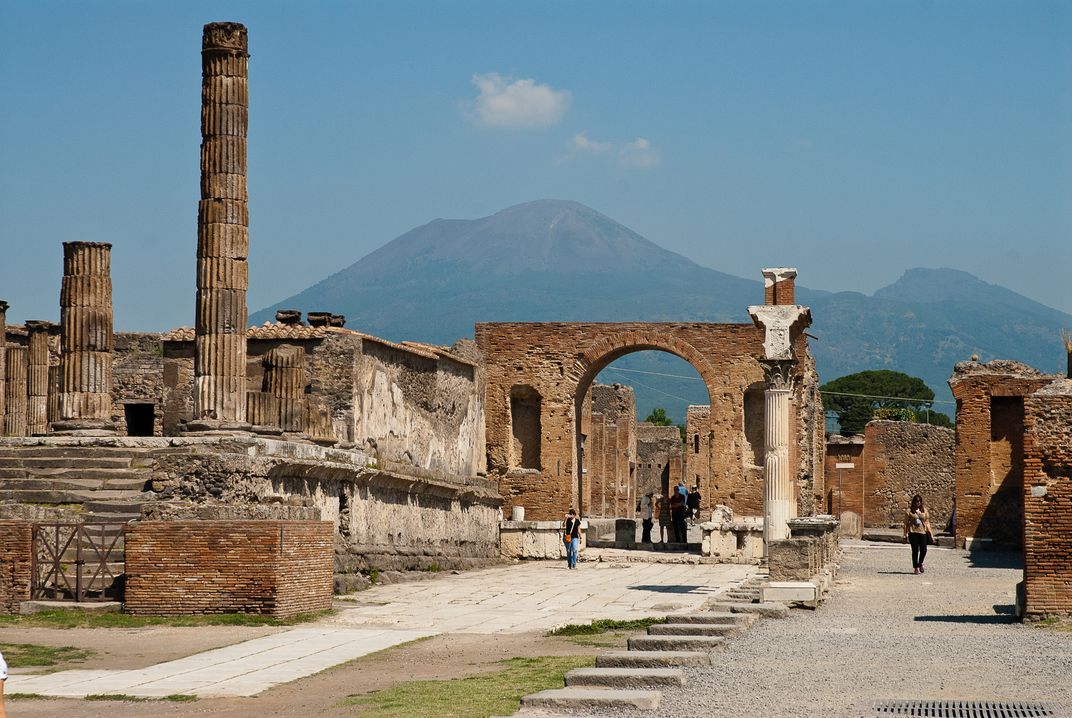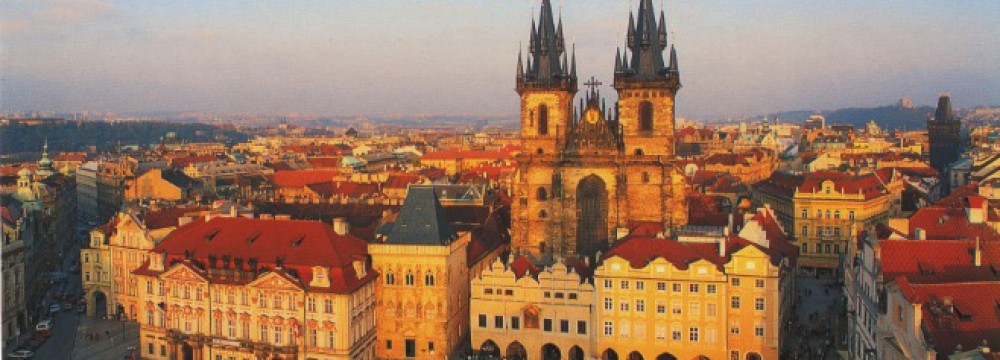
The Arch of Tiberius in the ruins of Pompeii (ohoto from the Smithsonian Magazine)
August 24, 79 A.D. – Vesuvius, an active volcano in southern Italy, erupted and destroyed the cities of Pompeii, Stabiae and Herculaneum. Although we think of the destruction of the cities as a sudden, unexpected catastrophe, there was ample time for most residents (18,000 out of 20,000) to escape Pompeii. They could see the volcano erupting for several hours before the ash and lava engulfed the city itself. The 2,000 people who died were the ones who refused to leave, who insisted that they would be safe, that the danger was being exaggerated by others, that the city would escape unscathed. (Aren’t there always people like that, in every natural disaster, who refuse to leave when they have the chance and then endanger others who have to come and rescue them? I remember the folks who refused to leave flood-prone area during Hurricane Sandy.)
Mythology tells us that Hercules, in the performance of his 12 labors, passed through the area and found “a hill which anciently vomited out fire … now called Vesuvius.” It was inhabited by bandits, “the sons of the Earth,” who were giants. With the assistance of the gods, Hercules pacified the region and went on. Because of his exploits in the area, one of the cities took the name “Herculaneum;” tourists can visit its ruins today although they are not as famous as the ruins of Pompeii.
Because the city of Pompeii was totally overwhelmed and buried by ash, it was perfectly preserved until its re-discovery in 1599 and then popularization in 1748. The objects that lay beneath the city have been preserved for more than a millennium because of the long lack of air and moisture. These artefacts provide an extraordinarily detailed insight into the life of a city during the Pax Romana. During the excavation, plaster was used to fill in the voids in the ash layers that once held human bodies. This allowed archaeologists to see the exact position the person was in when he or she died.
Pompeii has been a tourist destination for over 250 years. I was lucky enough to spend a day there in the autumn of 2014 (or was it 2013?). It was amazing to see such a perfectly preserved city, just waiting to be re-inhabited. I’ll be happy to occupy a villa, if one becomes available!
